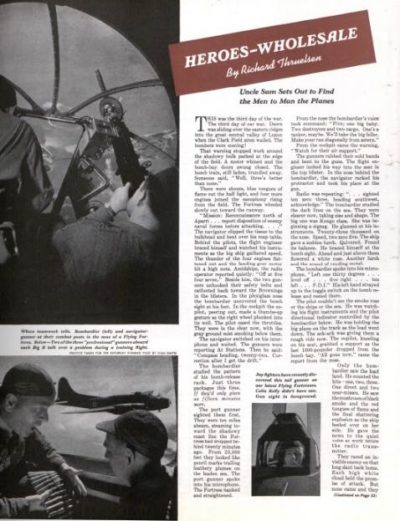Recruiting Heroes for the Air Corps: 75 Years Ago
It caught the world by surprise: During the spring of 1941, Germany conquered Luxembourg, Holland, Belgium, and France. It was a loud wake-up call for the U.S.
Suddenly, America realized that this new world war wouldn’t repeat the four-year stalemate of the last one. And, unlike World War I, military aircraft would play a crucial role in combat operations.
To meet the new challenge, President Roosevelt asked Congress to authorize construction of 50,000 modern aircraft. Many of these would be the Army Air Corps’ principal bomber, the B-17 Flying Fortress.
Military planners soon realized that flying one of these enormous bombers required better coordination between crew members, so they set out to change the training program.
Richard Thruelsen’s Post article “Heroes — Wholesale” introduced readers to the Air Corps’ “brand-new air force, 1942 style” and the “precision teamwork” it drilled into its air crews. The article describes the new selection process for pilots, navigators, bombardiers, and gunners. And it describes the formidable defenses of the B-17, which had enabled crews to fight off attacking Japanese fighters in the Philippines.
The article sometimes reads as a recruiting brochure. It reminds young men who haven’t been drafted yet that the Army dropped the minimum age for aviation cadets to 18. The Air Corps had also relaxed the medical restriction and eliminated any requirements for formal education. Potential aviators learned that any aviation cadet had the chance to become a pilot. Also, using the word heroes to describe aviators would have made the Army Air Corps sound even more appealing.
The appearance of this article on March 28, 1942, was well timed. Since the U.S. had entered the war, it had been able to do little more than fall back and secure its defenses. Americans wanted to know when their military was going to strike back at Japan.
Just three week later, the U.S. took the fight to the Japanese heartland, delivered by the hands of Army Air Corps bombers.

Featured image: Langley Field, Virginia. YB-17 bombardment squadron.
Library of Congress